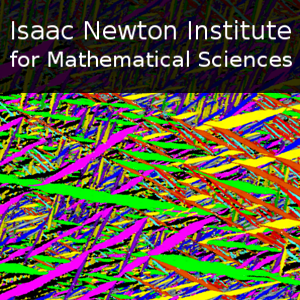Orientational ordering and self-organisation of nanoparticles in liquid crystal and polymer nanocomposites
18 mins 56 secs,
72.37 MB,
iPod Video
480x270,
29.97 fps,
44100 Hz,
521.89 kbits/sec
Share this media item:
Embed this media item:
Embed this media item:
About this item

| Description: |
Osipov, M
Tuesday 14th May 2019 - 16:40 to 17:00 |
|---|
| Created: | 2019-05-15 16:01 |
|---|---|
| Collection: | The mathematical design of new materials |
| Publisher: | Isaac Newton Institute |
| Copyright: | Osipov, M |
| Language: | eng (English) |
| Distribution: |
World
|
| Explicit content: | No |
| Aspect Ratio: | 16:9 |
| Screencast: | No |
| Bumper: | UCS Default |
| Trailer: | UCS Default |
| Abstract: | Nematic liquid crystals (LCs) and block copolymers doped with nanoparticles possess a number of interesting properties. In particular, anisotropic nanoparticles are orientationally ordered in the boundary region between the blocks [1-3] and a small concentration of nanoparticles can shift the transition temperatures between different phases, orientational ordering of nanoparticles is responsible for the enhanced dielectric anisotropy of the composite lamellae and hexagonal phases which opens a possibility to align block copolymers by external fields. This may enable one to solve various application problems. We first summarise the results of a molecular theory of nematic LCs doped with anisotropic nanoparticles and describe the effect of nanoparticles on the N-I phase transition, the nematic order parameter and consider the formation of chains of polar nanoparticle [4-7]. We then present the results of a molecular theory of the induced orientational order of anisotropic nanoparticles in the lamellae and in the hexagonal phase of a diblock copolymer taking into anisotropic interaction between nanoparticles and the polymer chains. Numerical concentration and orientational order parameter profiles are presented for different values of the model parameters including the strength of the anisotropic interaction. We also present the results of the general mean-field theory which enables one to describe both the effect of segregation of monomers between different blocks on the orientational order of nanoparticles and the effect of nanoparticles on the stability of different phases.. Finally we present the results of the computer simulations of the lamellae and hexagonal copolymer nanocomposites doped with nanoparticles of different length and affinity, and the simulated concentration and order parameter profiles are compared with theoretical results [1,3]. We also discuss the corresponding phase diagrams which illustrate how the nanoparticles may effect the phase behaviour of block copolymers. References [1] Osipov, M. A., Gorkunov, M. V., Berezkin, A. V., Kudryavtsev, Y. V., Phys. Rev. E, 97, 042706 (2018) [2] M.A. Osipov and M.V. Gorkunov, Eur.Phys.J., 39, 126 (2016) [3] A.V. Berezkin, Y.V. Kudryavtsev, M.V. Gorkunov, and M.A. Osipov, J. Chem. Phys., 146, 144902 (2017) [4] M.V. Gorkunov and M.A. Osipov, Soft Matter, 7, 4348 (2011) [5] M.A. Osipov and M.V. Gorkunov, ChemPhys.Chem. 15, 1496 (2014) [6] M.A. Osipov and M.V. Gorkunov, Phys. Rev. E , 92, 032501 (2015) [7] Osipov, M. A. and Gorkounov, M. V. in Liquid Crystals with Nano and Microparticles. Lagerwall, J. P. F. and Scalia, G. (eds.). Singapore: World Scientific Publishing Company, 2016. |
|---|---|
Available Formats
| Format | Quality | Bitrate | Size | |||
|---|---|---|---|---|---|---|
| MPEG-4 Video | 640x360 | 1.93 Mbits/sec | 275.41 MB | View | Download | |
| WebM | 640x360 | 574.81 kbits/sec | 79.78 MB | View | Download | |
| iPod Video * | 480x270 | 521.89 kbits/sec | 72.37 MB | View | Download | |
| MP3 | 44100 Hz | 249.84 kbits/sec | 34.68 MB | Listen | Download | |
| Auto | (Allows browser to choose a format it supports) | |||||

